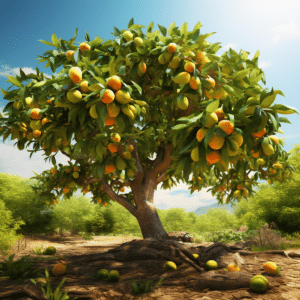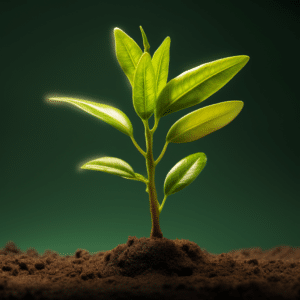Have you ever wondered how to grow a mango seed and start your very own mango tree? Growing a mango seed is not only a fun and rewarding project, but it also allows you to enjoy the delicious fruits of your labor. In this step-by-step guide, we will discuss everything you need to know about growing a mango seed and nurturing it into a thriving mango tree.
Understanding the Mango Seed

Before you embark on your mango seed growing journey, it’s important to understand the anatomy of a mango seed. The mango seed consists of two main parts – the embryo and the seed coat. The embryo is the tiny plant embryo that will eventually become your mango tree, while the seed coat is the protective outer layer that covers the embryo.
Now, let’s take a closer look at the anatomy of a mango seed. The embryo of the mango seed is located inside the seed coat. It consists of the cotyledon, which is the embryonic leaf that provides nutrients to the growing seedling, and the plumule, which is the shoot tip that will develop into the mango tree’s branches and leaves.
The cotyledon plays a crucial role in the early stages of the mango seed’s development. It contains stored nutrients that will nourish the seedling until it can establish its own root system and begin photosynthesis. As the seedling grows, the cotyledon will gradually wither and fall off, making way for the development of true leaves.
The Life Cycle of a Mango Tree
Before we dive into the process of growing a mango seed, let’s briefly discuss the life cycle of a mango tree. The mango tree goes through several stages, each with its own unique characteristics and requirements.
The first stage is germination, where the mango seed begins to sprout and the embryo starts to grow. This process is triggered by the right combination of moisture, warmth, and oxygen. Once the seed has germinated, it will develop a root system and begin to absorb water and nutrients from the soil.
As the mango seedling continues to grow, it enters the seedling growth stage. During this stage, the seedling will develop its first set of true leaves and establish a stronger root system. It is crucial to provide the seedling with adequate sunlight, water, and nutrients during this stage to ensure healthy growth.
After the seedling growth stage, the mango tree enters the vegetative growth stage. This is when the tree focuses on growing taller and developing more branches and leaves. It is important to prune the tree during this stage to promote a strong and well-shaped structure.
Once the mango tree reaches maturity, it will start to produce flowers. The flowering stage is a critical period for the tree, as it determines the potential fruit yield. Mango trees are typically self-pollinating, but cross-pollination by insects can also occur. The flowers will eventually develop into small, green fruits.
As the fruits continue to grow and mature, they will change color and develop their characteristic aroma and flavor. This is the fruiting stage of the mango tree. It is important to provide the tree with proper care, including regular watering and fertilization, to ensure optimal fruit development.
Finally, the mango tree reaches maturity, and the fruits are ready to be harvested. The exact time of harvest depends on the mango variety and desired ripeness. It’s important to handle the fruits with care to avoid bruising or damaging them.
Understanding the life cycle of a mango tree will help you better care for your growing seedling and anticipate its future development. By providing the right conditions and nurturing your mango seed, you can witness the incredible journey from a tiny seed to a majestic tree bearing delicious fruits.
Preparing Your Mango Seed for Planting

Now that you have a basic understanding of the mango seed, it’s time to prepare it for planting. Properly selecting and preparing your mango seed will set the foundation for a healthy and thriving tree.
Selecting the Right Mango Seed
When selecting a mango seed, it’s important to choose a fresh and viable seed. Look for a seed that is plump and fully matured. Avoid seeds that are shriveled or damaged, as they may not germinate successfully.
Cleaning and Drying the Seed
Before planting, it’s essential to clean and dry the mango seed. Rinse the seed under running water to remove any pulp or residue. Avoid removing the seed coat, as it provides protection to the embryo. After cleaning, place the mango seed in a cool and dry place to dry for a few days. Drying the seed helps prevent fungal growth during germination.
Planting Your Mango Seed
With your mango seed cleaned and dried, it’s time to move on to the planting process. Planting your mango seed correctly will ensure successful germination and the healthy growth of your seedling.
Choosing the Right Soil
Mango trees thrive in well-draining soil that is rich in organic matter. Choose a potting mix that is specifically formulated for fruit trees or create your own mix using equal parts of sand, compost, and garden soil. Fill a shallow pot or seed tray with the chosen soil mix.
The Planting Process
Gently press the mango seed into the soil, ensuring that the seed is about halfway buried with the top portion exposed. Water the soil lightly to keep it moist but not overly wet. Place the pot or seed tray in a warm and well-lit area, such as a sunny windowsill. Avoid direct sunlight, as it can dry out the soil too quickly.
Caring for Your Mango Seedling

Now that you have planted your mango seed, it’s time to care for your growing seedling. Proper watering, fertilization, and sunlight are crucial for the healthy development of your mango tree.
Watering and Fertilizing Your Seedling
Keep the soil consistently moist, but avoid overwatering, as excessive moisture can lead to root rot. Water the seedling regularly, ensuring that the soil is slightly damp. As the seedling grows, you can gradually increase the amount of water. Additionally, fertilize the seedling every three to four months with a balanced fertilizer specially formulated for fruit trees.
Providing Adequate Sunlight
Mango trees thrive in full sunlight. Ensure that your seedling receives at least 6-8 hours of direct sunlight daily. If necessary, use artificial grow lights to supplement sunlight during the winter months. Regular exposure to sunlight will promote healthy growth and encourage flowering and fruiting in the future.
Transplanting Your Mango Tree
As your mango tree grows, it will eventually outgrow its pot and require transplantation into a larger container or into the ground. Knowing when and how to transplant your mango tree is important to ensure its continued growth and development.
When and How to Transplant
Transplant your mango tree when it has reached a height of about 2-3 feet and has developed a sturdy root system. Choose a well-draining location with full sunlight for transplantation. Gently remove the seedling from its current pot, being careful not to damage the roots. Dig a hole slightly larger than the root ball and place the seedling in, ensuring that the soil level matches the level of the previous container. Backfill the hole with soil and water thoroughly.
Caring for Your Transplanted Tree
After transplantation, continue to care for your mango tree by providing regular watering and fertilization. Monitor the soil moisture and adjust watering accordingly. Prune the tree to maintain its desired shape and remove any dead or diseased branches. With proper care and attention, your transplanted mango tree will continue to grow and bear delicious fruits for years to come.
Growing a mango seed may take time and patience, but the rewards are undoubtedly worth it. By following this step-by-step guide, you can successfully grow a mango seed into a thriving mango tree that will provide you with an abundance of sweet and juicy fruits. Get started on your mango seed growing journey today and enjoy the satisfaction of cultivating your very own tropical fruit tree.
